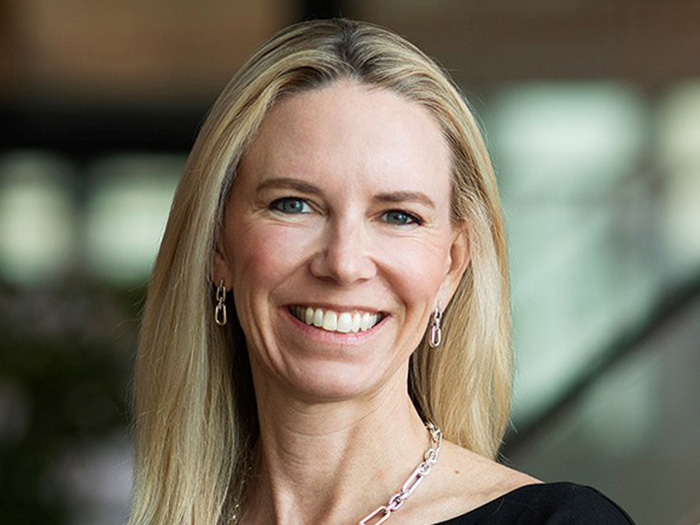Insurance-Linked Securities Continue to Shatter Volume Records. But How Will CAT Activity Impact the Market?

Issuance of insurance-linked securities (ILS) was on pace to hit a record in the first half 2021 in part due to new sources of capital entering the market to capture its attractive returns and the risk mitigation benefits of an investment less correlated to the traditional financial markets.
Overall ILS, including property catastrophe (CAT) bonds (by far the largest portion), as well as mortgage, private and other ILS deals, reached $12.7 billion as of June 25, compared to $16.4 billion for all of 2020 — itself a record, according to the Artemis platform, which focuses on ILS news and analysis.
Of those totals, CAT bonds made up $8.1 billion as of June 25 compared to $11.0 billion for all of 2020, according to Artemis, and mortgage ILS, the next largest portion, was $3.7 billion this year compared to $4.3 billion for all of 2020.
“Just on expected maturities, if they’re renewed, we’ve very optimistic that 2021 volume will equal or surpass what was done last year,” said Judy Klugman, managing director at Swiss Re capital markets and a 20-year veteran of the ILS market.
Fueling the high volume of ILS deals is a surge of new capital entering the market seeking attractive and relatively steady returns. In its ILS Market Update, Swiss Re illustrates the securities consistently exhibit higher and less volatile spreads than the similarly rated high-yield bond spreads tracked by Bank of America.
That being said, the influx of new investors attracted to the transparency of CAT bonds issued in the Rule 144a market, compared to the collateralized reinsurance market, has tightened spreads on deals so far this year.
“The new start-up capital is a very important factor, because those investors really need to deploy their capital,” said Wai Tang, an analyst at A.M. Best. “They tend to be lean and efficient in terms of their cost of capital, and they don’t have legacy deals on their books, so they can be aggressive in pricing.”
The Role of the Nat CAT
Insured losses from manmade and natural catastrophes totaled $83 billion in 2020, the fifth costliest year since 1970, of which $76 billion stemmed from the natural variety, according to Swiss Re. About 70% of those losses were driven by so-called secondary peril events, such as thunderstorms with tornadoes, floods, hail and wildfires.
Niraj Patel, head of AXA XL’s ILS capital management team, noted losses due to secondary perils have increased significantly over the last few years, driven largely by exposure growth in disaster prone areas as well as severe weather and climatic factors.
Ongoing development on the West Coast, for example, has led to increases in the wildland–urban interface, the area where human development meets or mixes with undeveloped wildland vegetation. Coupled with extreme hot weather, these changes have resulted in record wildfire frequency and intensity.
Last year’s abundance of catastrophic events, including wildfires across the West Coast and 13 named storms, of which six were major hurricanes that made landfall, resulted in payments to CAT bond sponsors approaching $700 million, the highest since 2017’s nearly $1.1 billion in losses, according to Swiss Re.
Klugman said losses on the bonds ultimately strengthen the market from a sponsor’s perspective, because they justify paying for the protection. Nevertheless, she added, “ILS performance from an institutional investor’s perspective has been very strong.”
Responding to Perils
The increase in losses due to secondary perils has prompted investors to increase their support for per-occurrence transactions, in which each individual event loss has to exceed an attachment point to trigger the ILS transaction, rather than transactions that also aggregate secondary perils to reach that point.
Swiss Re recently tackled the issue in a different way, structuring a CAT bond to include secondary perils in which a specific loss threshold for each peril must be met before the peril’s subsequent losses are aggregated.
“With an event deductible, if you meet that threshold you only take the losses above what the event deductible was, implying the sponsor always has to retain a certain amount of risk,” Klugman said, adding that the event deductible allowed the transaction’s sponsor to achieve extremely efficient pricing and execution for an aggregate transaction almost on par with a per-occurrence trigger.
Capital and Risk
There is an abundance of capital across the financial industry, but historically low interest rates, increased loss activity over the last few years, and social inflation are adversely impacting reinsurers and ILS investors’ profitability, leading to increasing investor scrutiny of transactions, Patel said.
“The focus is on making sure we continue to enhance our analysis of the underlying risk and price transactions appropriately, so there is adequate return on capital,” Patel said, adding that secondary perils have often been inappropriately priced in deals.
“Without additional catalysts, I don’t expect multiple years of significant price increases like the ones we have seen recently, but the price firming we’re seeing to date is likely to hold.”
COVID’s Influence
One peril facing scrutiny is pandemic in light of the COVID-19 outbreak. The only CAT bond in which pandemic was the primary peril was the World Bank’s $320 million Pandemic Emergency Financing (PEF) Facility, issued in July 2017. The three-year deal was set to expire last July, but the onset of the pandemic triggered a $195.84 payment, which the World Bank allocated to 64 of the world’s poorest countries with reported cases of COVID-19.
“Just on expected maturities, if they’re renewed, we’ve very optimistic that 2021 volume will equal or surpass what was done last year. — Judy Klugman, managing director, capital markets, Swiss Re
Artemis highlighted in early April 2020 that some CAT bonds include a covered peril bucket titled “other perils” that could be interpreted to the include COVID-19 or future outbreaks unless there are carefully worded exclusions. A month later, Artemis reported that investors in a $100 million CAT bond from USAA pushed for a pandemic exclusion clause in the final documentation.
Patel said reinsurers and ILS investors have focused on clarifying the language around communicable disease.
“We are focusing our efforts on reviewing our policies carefully as they renew to ensure the policy language is abundantly clear in terms of coverage and limitations,” he said. “It’s good for us and for insured clients, because they know exactly what is covered and what is not covered.”
He added that property losses related to COVID-19 have been less of an issue in the U.S., where adherence to International Organization for Standardization (ISO) standards is prevalent. Japanese cedents have also applied more carefully crafted language, following the Severe Acute Respiratory syndrome (SARS) in the early 2000s.
Patel said another trend in 2021 has been reinsurers using CAT bonds to buy more protection, rather than retrocessional coverage from other reinsurance companies, adding that AXA XL has historically been a major CAT bond sponsor.
Demand Remains Strong
Fitch Ratings noted in an early June report that demand for CAT bonds has remained strong despite the record catastrophic events in 2020 and forecasts of a highly active 2021 hurricane season, and that CAT bond issuance by insurers and reinsurers has positioned them well for absorbing major losses that may occur. Fitch notes an indication of such demand is that several CAT bond deals priced tighter than anticipated and were increased in size.
Asha Attoh-Okine, an analyst at A.M. Best, said 20 out of the 29 CAT bonds issued through June saw sufficient investor demand to increase their size by a total of more than $2.3 billion, bringing the total amount CAT bond issuance to $8.5 billion.
He added that investors are attracted to the CAT bonds’ transparent structures, the type of coverage provided, and a clearer understanding of their potential exposed losses.
A.M. Best said CAT bond issuance this year is likely to equal or surpass last year’s high volume, in part because $10.2 billion in bonds are scheduled to mature this year and likely will be renewed, compared to $9 billion last year, and because of their attractive returns and low financial-market correlation.
The 2021 North Atlantic hurricane season is projected to be above normal. But higher insured losses won’t automatically result.
“That analysis doesn’t necessarily translate into an increase in storms making landfall in populated areas, so it doesn’t correlate well with large insured losses,” Patel said. For example, last year’s hurricane season, despite being an active one with 30 named storms and 6 hurricanes making landfall in the U.S., doesn’t rank among the largest in terms of insured hurricane losses.
Furthermore, the timing of seasonal predictions poses a challenge at a practical level, Patel said, since by the time the scientific analysis of dynamics in the Atlantic Basin are refined, the renewals and ILS transactions for the upcoming year will have already been completed. &











